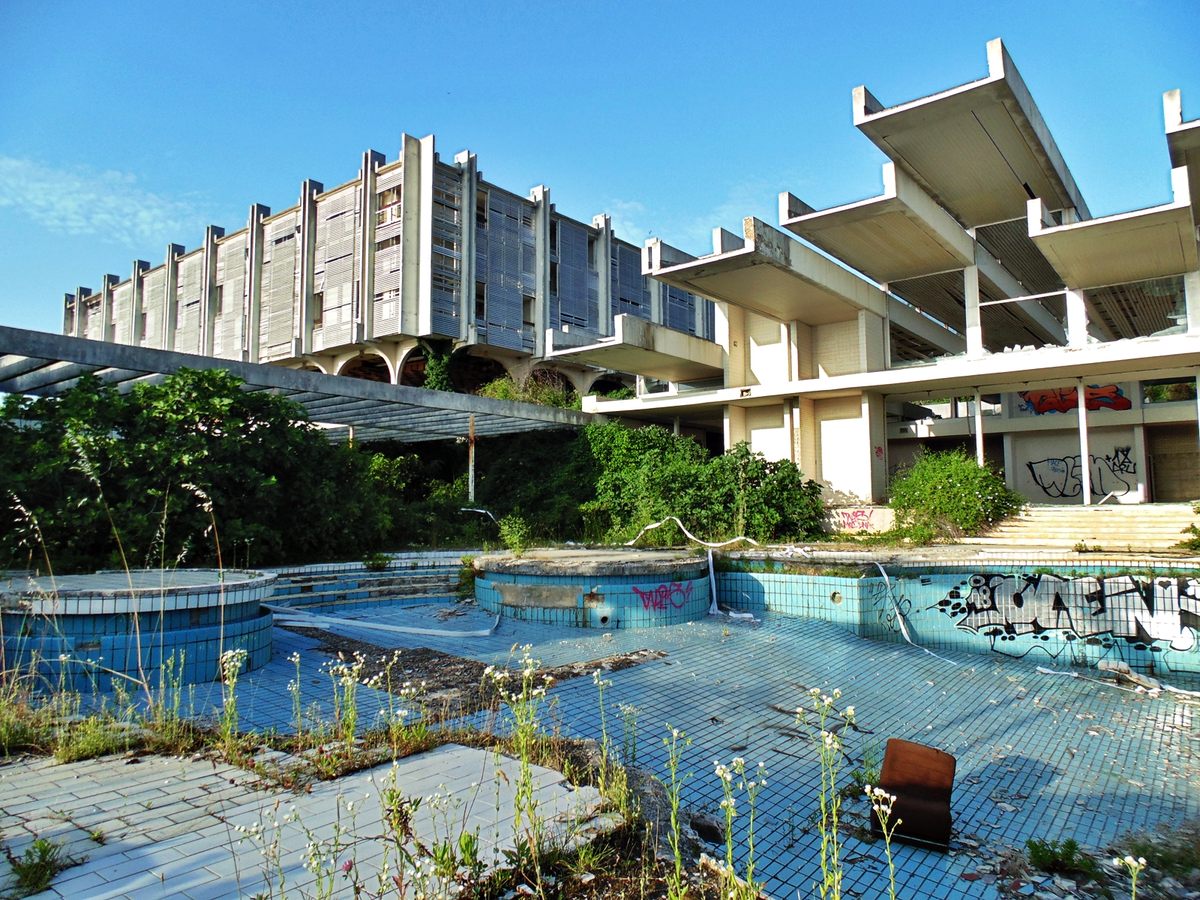Once a grand example of Communist-era architecture, the Haludovo Palace Hotel now lies in ruins on a Croatian beach. Nestled on the coast of the island of Krk, this former palace now looks more like a decaying set from a 1970s science fiction film than a luxurious hotel.

When it first opened, the hotel complex was a premier destination in Eastern Europe, regarded as the most luxurious vacation spot in the former Yugoslavia. Constructed in 1971 under the guidance of architect Boris Magaš, the building is a prime example of midcentury space age design, featuring the monolithic style common in Communist architecture. Its modular shapes, uneven concrete beams and columns, and wood-paneled interiors firmly root the hotel in a past era.

A year after the hotel’s opening, Bob Guccione, the founder of Penthouse magazine, invested $45 million to expand it, adding the Penthouse Adriatic Club Casino. He believed that these glamorous tourist attractions could improve relations between the United States and Yugoslavia. The hotel and casino’s amenities, such as gourmet dining, a cocktail bar, a pool, saunas, a tennis court, and non-stop entertainment, starkly contrasted with the typical Western perceptions of Communist Eastern Europe. Although Yugoslavia under Josip Broz Tito was a heavily regulated society, foreign tourists were allowed to gamble at the casino. The Haludovo Palace attracted athletes, actors, dignitaries, and leaders from around the globe.

This golden age, however, was short-lived. When war erupted in Yugoslavia in the 1990s, the area lost its appeal to foreign tourists seeking luxury and sunshine. By the time Croatia declared independence, the hotel had been abandoned for years and had fallen into disrepair. Today, it stands as a decaying relic, a time capsule from one of the most unusual periods in tourism history.













